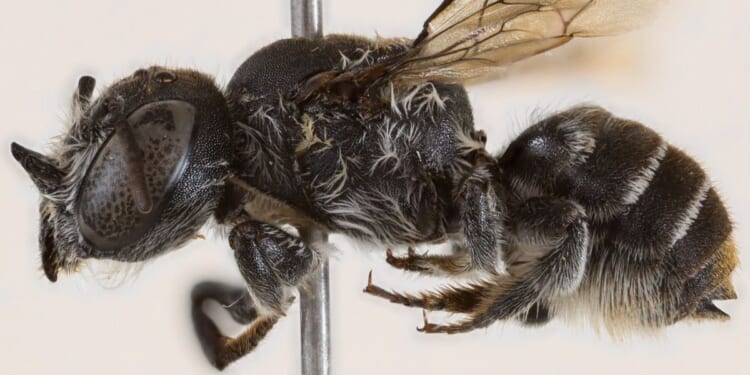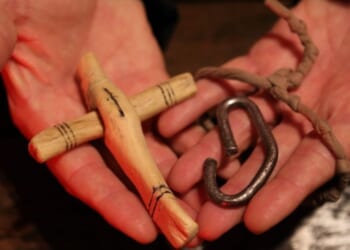Australian researchers have identified a remarkable native bee sporting miniature devil-like protrusions, prompting them to christen the species Megachile lucifer.
The distinctive upward-facing horns, measuring approximately 0.9 millimetres in length, appear exclusively on female specimens of this newly documented species.
The discovery occurred in Western Australia’s remote Goldfields area, roughly 470 kilometres east of Perth, where scientists were conducting surveys of rare flora.
Megachile lucifer’s unusual facial features that inspired the infernal moniker could serve multiple purposes, from nest protection to resource gathering, though researchers have yet to determine their precise function.
Dr Kit Prendergast from Curtin University made the discovery whilst observing Marianthus aquilonarius, a critically endangered wildflower that exists solely in the Bremer Ranges.
The 2019 survey revealed these horned specimens in an isolated habitat that remains vulnerable to mining activities and land clearing.
DNA analysis confirmed the insects represented an entirely new species absent from existing databases and museum collections.
The remote location where both the rare plant and its newly identified pollinator were found underscores the fragility of their shared ecosystem, with researchers expressing concern about the limited geographical range both species occupy.

Scientists have discovered a new bee species with tiny horns, now dubbed the Megachile lucifer
|
DR KIT PRENDERGRAST/CURTIN UNIVERSITY
The nomenclature drew inspiration from an unexpected source, as Dr Prendergast revealed she was viewing the Netflix programme “Lucifer” whilst documenting the species.
“The name just fit perfectly,” she stated, noting how the prominent facial structures reminded her of the show’s titular character.
This marks the first addition to the Hackeriapis bee group in two decades, representing a significant taxonomic discovery.
Researchers propose the horns might facilitate flower access, assist in pollen collection, or aid in gathering nest-building materials like resin.

The insects ‘horns’ could be used for nest protection or resource gathering
|
DR KIT PRENDERGRAST/CURTIN UNIVERSITY
Male specimens notably lack these distinctive protrusions, suggesting the structures serve a gender-specific purpose that warrants further investigation.
The discovery illuminates broader conservation challenges facing Australia’s approximately 2,000 native bee species, with over 300 still awaiting scientific classification.
Tobias Smith from the University of Queensland highlighted how these pollinators remain “understudied and data poor”, hampering conservation efforts.Climate change and habitat destruction pose immediate threats to the newly discovered species.
Dr Prendergast warned: “Without knowing which native bees exist and what plants they depend on, we risk losing both before we even realize they’re there.”
The findings, published in the Journal of Hymenoptera Research, coincided with Australian Pollinator Week, emphasising the vital ecological role these insects play.

















